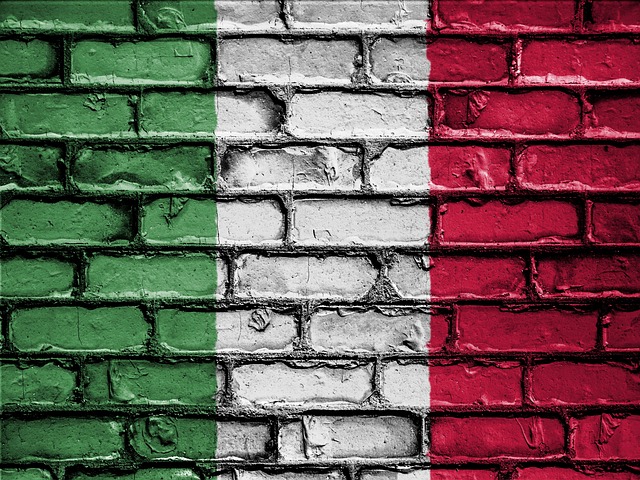The 2.5 x 4 American flag is a smaller yet powerful representation of the United States' national pride and patriotism, capturing the essence of the country's history, values, and identity. Despite its reduced size compared to the standard 3 by 5 foot flag, it maintains the same symbolic significance, being officially recognized for display on land vehicles, in small spaces, or as lapel pins. This flag, featuring the traditional stars and stripes, holds deep historical meaning, with each element reflecting significant moments in American history and representing the country's diverse past and aspirational future. The 2.5 x 4 flag has evolved over time, from its origins to the present-day 50-star design, each star and stripe signifying a state that has joined the Union. It is a universal symbol of American identity, freedom, democracy, and ideals, resonating with people worldwide as a potent emblem of the American spirit. Beyond its use on national holidays like Flag Day and Independence Day, the 2.5 x 4 American flag plays a central role in military culture, representing courage, sacrifice, and commitment to the nation's values, and is prominently displayed during significant events and observances that reinforce unity and shared pride among Americans.
Embark on a journey through the threads of history that weave the essence of American patriotism and national pride into the fabric of society. This article delves into the profound significance of the 2.5 x 4 American Flag, a symbol that transcends its dimensions to represent unity, heritage, and values. From its historical evolution to its presence in military traditions and civilian life, the flag stands as a beacon of identity and pride. Explore its role beyond mere decoration, and celebrate the myriad ways Americans honor their heritage, from Flag Day to Independence Day. Join us as we unfurl the layers of meaning behind this enduring emblem of the United States.
- The Symbolism of the 2.5 x 4 American Flag: A Beacon of Patriotism
- Historical Context and Evolution of the American Flag
- The Role of Symbolism in National Pride: Beyond the Flag
- Expressions of Patriotism Across American Society
- The Significance of the 2.5 x 4 Flag in Military Traditions
- Celebrating American Heritage: Flag Day, Independence Day, and More
The Symbolism of the 2.5 x 4 American Flag: A Beacon of Patriotism

The 2.5 by 4-inch American flag, a diminutive yet potent symbol of national pride and patriotism, encapsulates the essence of American identity in its proportions. This sized flag, which is officially recognized as the “flag for use on and over land vehicles,” serves as a beacon of unity and a testament to the country’s values. It represents the larger 3 by 5 foot flag that many associate with the United States, distilling its significance into a more manageable form suitable for display on vehicles, small spaces, or as lapel pins. The compact design carries the same stars and stripes, each element rich in historical and cultural meaning. The thirteen horizontal stripes symbolize the original thirteen colonies that declared independence from Britain, while the stars on the blue field represent the states that have joined the Union since then. This flag, much like its larger counterpart, is a reminder of the country’s storied past, its ongoing narrative, and the shared aspirations of its people. It is a visual affirmation of American patriotism, carried by citizens both domestically and internationally, serving as a symbol of freedom, democracy, and American values. The 2.5 by 4-inch flag is a tangible representation of the American spirit, a small yet mighty emblem that resonates with pride in the achievements and ideals of the nation.
Historical Context and Evolution of the American Flag

The evolution of the American flag is a visual chronicle of the nation’s history, values, and identity. From the original “Betsy Ross” flag, which adopted the stars and stripes configuration in 1777, to the current 50-star flag representing the 50 states of the Union, each iteration of the flag carries significant historical significance. The 2.5 x 4 American flag, a common ratio for residential display, symbolizes a balance between proportional representation and practical visibility. As the country expanded with new state admissions, the flag underwent an ordered process of change, adding a star and a stripe after each new state’s admission. This practice ceased upon Hawaii’s adoption as the 50th state in 1959, culminating in the current design, which has flown over the entire nation. The flag serves as a tangible emblem of patriotism and national pride, reflecting the enduring spirit of unity and diversity that defines America. It is a daily reminder for citizens and a familiar icon to those abroad, encapsulating the history and values of the United States in its stripes and stars.
The Role of Symbolism in National Pride: Beyond the Flag

2.5 x 4 American flags, often referred to as “large format” or “wide aspect ratio” flags, serve as a tangible symbol of national pride that extends beyond the conventional 1:2 ratio flags typically seen on residential porches and public buildings. These larger flags, with their broader field of stars and stripes, are a visual testament to American identity and values, often deployed during significant events like parades, patriotic ceremonies, and outdoor gatherings where their grandeur can be fully appreciated. The scale and presence of a 2.5 x 4 American flag imbue the surroundings with an intensified sense of unity and pride, as the fabric billows in the wind or stands resolute against the skyline.
Beyond the physical flags, other symbols such as monuments, national landmarks, and historical sites also play a crucial role in fostering a collective sense of American patriotism. The architecture of government buildings, for instance, with their imposing structures and neoclassical designs, not only represent the enduring legacy of the nation but also serve as constant reminders of the ideals and history that define America. These symbols, both tangible and intangible, from national anthems to the pledge of allegiance, from commemorative coins to presidential addresses, all contribute to a multifaceted tapestry of American identity that transcends geographical and generational boundaries, fostering a deep-seated sense of pride and belonging among citizens. The 2.5 x 4 American flag, as a prominent emblem within this symbolic landscape, stands as a powerful representation of the nation’s diversity, resilience, and spirit.
Expressions of Patriotism Across American Society

2.5 x 4 American flags are a testament to the diversity of expressions of patriotism within American society. These larger-than-standard flags, which are officially recognized by the U.S. government as the flag ratio most representative of the nation’s flag, symbolize a deep sense of pride and allegiance that Americans across various walks of life exhibit daily. From city halls to residential porches, these flags flutter, capturing the vibrancy of the nation’s character. The 2.5 x 4 proportion is particularly significant as it adheres to the Flag Code, which provides guidance on proper flag etiquette. This size not only honors the flag but also allows for clear visibility and a powerful symbol of unity during parades, events, and times of national reflection.
The expressions of patriotism in American society are multifaceted, transcending beyond the visual to include acts of service, civic engagement, and cultural celebrations. The 2.5 x 4 American flag is just one manifestation of this complex tapestry of national pride. Beyond the flag, Americans show their patriotism through volunteerism in community programs, participation in democratic processes, and the preservation of traditions that bind the nation together. These actions reflect a commitment to the ideals of freedom, democracy, and justice for all, underscoring the enduring spirit of American society.
The Significance of the 2.5 x 4 Flag in Military Traditions

The 2.5 x 4 American flag holds a deeply rooted significance within military traditions, serving as a symbol of courage, sacrifice, and commitment to the nation’s ideals. This proportional variant of “Old Glory” is often referred to as the “service flag” due to its historical association with the U.S. Armed Forces. It is commonly flown over military installations, at recruitment offices, and during official ceremonies. Its larger size compared to the standard 1:2 ratio flag makes it more visible from greater distances, allowing service members and their families to see this emblem of national pride and unity while maintaining tradition. The 2.5 x 4 American flag is a tangible representation of the values that military personnel uphold, including honor, integrity, and loyalty to country. It is a powerful visual reminder of the sacrifices made by those who serve, and its presence instills a sense of pride and solidarity among the armed forces community.
In the context of military life, the 2.5 x 4 American flag is not merely an emblem; it’s a rallying point for unity and a symbol of hope for families of service members. It is flown during moments of national significance, such as on National Flag Day, Memorial Day, and Independence Day, to honor those who have served or are currently serving. The flag’s larger size amplifies its role in military rituals, from the solemn ceremony of folding it during a funeral with military honors to its majestic display at parades and official events. It stands as a testament to the enduring bond between the American people and their military, reflecting the shared values and aspirations that define American patriotism and national pride.
Celebrating American Heritage: Flag Day, Independence Day, and More

1. American patriotism finds a vibrant expression through the myriad of national holidays celebrated across the country, each imbued with historical significance and cultural import. Among these, Flag Day on June 14th stands out as a day dedicated to honoring the flag of the United States—a symbol deeply intertwined with the nation’s identity and values. The 2.5 x 4 American flag, a specific proportion which has been standardized for its visibility and recognition, becomes the focal point of this commemoration. Communities come together to pay tribute through flag-raising ceremonies, parades, and community gatherings, reinforcing the bond between citizens and their national emblem.
2. Independence Day, celebrated on July 4th, marks the Declaration of Independence and America’s birth as a nation. This day is characterized by grand displays of fireworks, barbecues, and festive events that bring families and friends together. The American flag, particularly the 2.5 x 4 variant, is prominently displayed, reflecting the collective pride in the country’s achievements and aspirations. Beyond these well-known celebrations, there are myriad other days throughout the year dedicated to recognizing various aspects of American heritage—from Veterans Day to Martin Luther King Jr. Day—each offering an opportunity for citizens to engage with their history and express their national pride in diverse ways. These observances not only foster a sense of unity but also serve as reminders of the shared values and ideals that define America.
